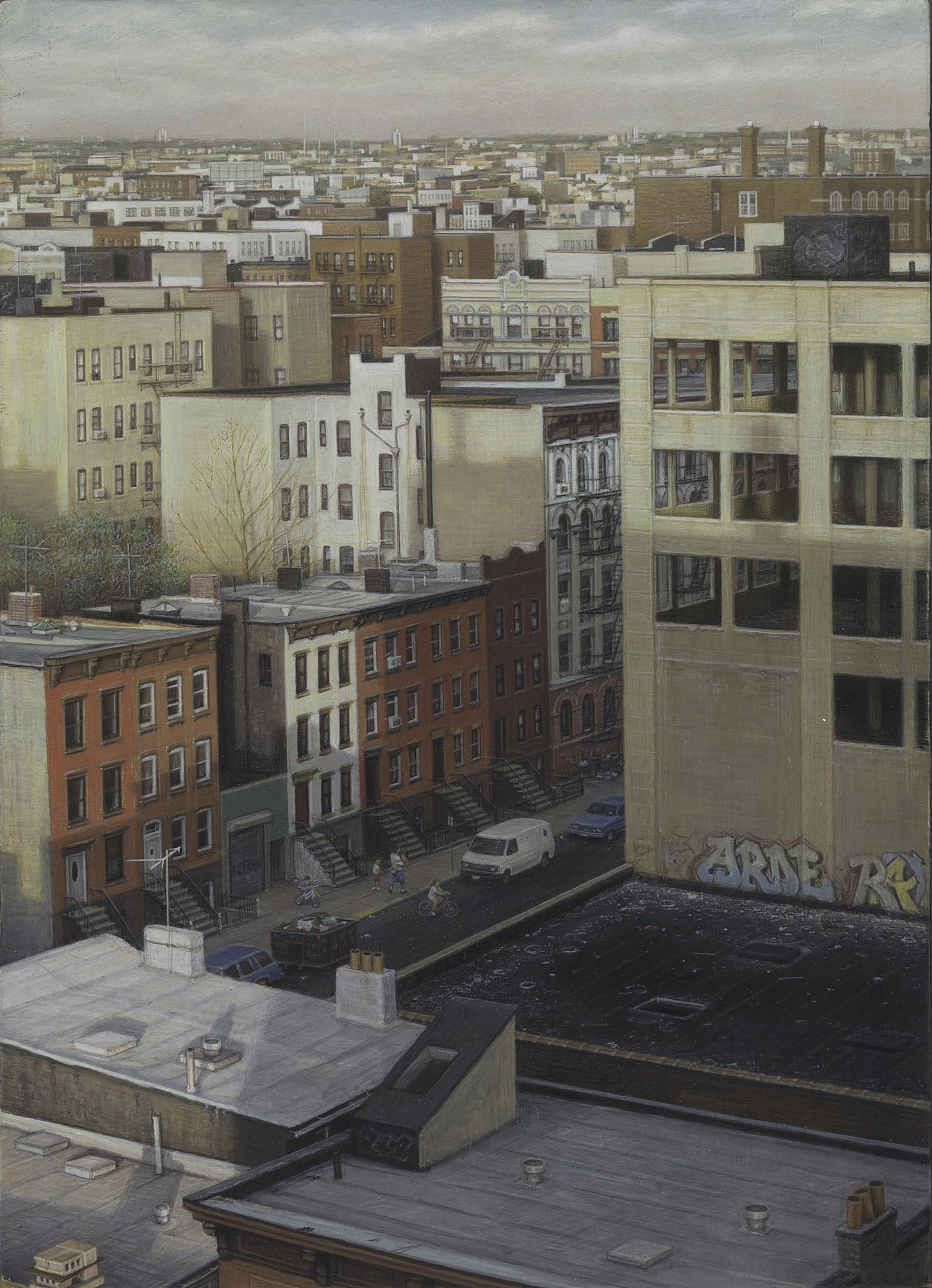Doug Safranek
Doug Safranek is a meticulous realist painter who has built his practice using the classical technique of egg tempera. Born in Spokane, Washington, Safranek later traveled east to attend Boston College. He then pursued his MFA at the University of Wisconsin-Madison, which had a program that emphasized classical techniques such as egg tempera, fresco, and encaustic. Two professors at Madison would have a profound impact on Safranek: John Wilde and James Watreous. Wildewas an enigmatic magic realist painter, and he introduced Safranek to egg tempera. Watreous had known the Regionalist masters Thomas Hart Benton and John Steurt Curry, and he gave Safranek pigments belonging to these artists. Safranek was inspired not only by the ancient medium used by Regionalist artists, but also their subject matter of realism. He arrived in New York during the mid-1980’s and began to paint the busy urban landscape.
In Far and Near, Safranek has vividly captured the multi-layered cityscape of New York on a miniature scale. The scene is painted from above, perhaps from the window of Safranek’s Brooklyn studio, where rows of uniformly designed nineteenth-century townhouses, an abandoned and graffitied factory, and larger turn-of-the-century apartment buildings are tightly packed into the composition. Buildings stretch across the flat landscape deep into the horizon. The small scale of the painting encourages viewers to study the minute details of the familiar urban scene—a bicyclist crossing the street, a green dumpster sitting idle near the curb, and the countless fire escapes lining the old buildings. The painting is an intimate portrait of the city, which has served as Safranek’s inspiration throughout his career.
Doug Safranek is a meticulous realist painter who has built his practice using the classical technique of egg tempera. Born in Spokane, Washington, Safranek later traveled east to attend Boston College. He then pursued his MFA at the University of Wisconsin-Madison, which had a program that emphasized classical techniques such as egg tempera, fresco, and encaustic. Two professors at Madison would have a profound impact on Safranek: John Wilde and James Watreous. Wildewas an enigmatic magic realist painter, and he introduced Safranek to egg tempera. Watreous had known the Regionalist masters Thomas Hart Benton and John Steurt Curry, and he gave Safranek pigments belonging to these artists. Safranek was inspired not only by the ancient medium used by Regionalist artists, but also their subject matter of realism. He arrived in New York during the mid-1980’s and began to paint the busy urban landscape.
In Far and Near, Safranek has vividly captured the multi-layered cityscape of New York on a miniature scale. The scene is painted from above, perhaps from the window of Safranek’s Brooklyn studio, where rows of uniformly designed nineteenth-century townhouses, an abandoned and graffitied factory, and larger turn-of-the-century apartment buildings are tightly packed into the composition. Buildings stretch across the flat landscape deep into the horizon. The small scale of the painting encourages viewers to study the minute details of the familiar urban scene—a bicyclist crossing the street, a green dumpster sitting idle near the curb, and the countless fire escapes lining the old buildings. The painting is an intimate portrait of the city, which has served as Safranek’s inspiration throughout his career.
Doug Safranek
Far and Near, 2003
Tempera on panel
7 x 5 inches

